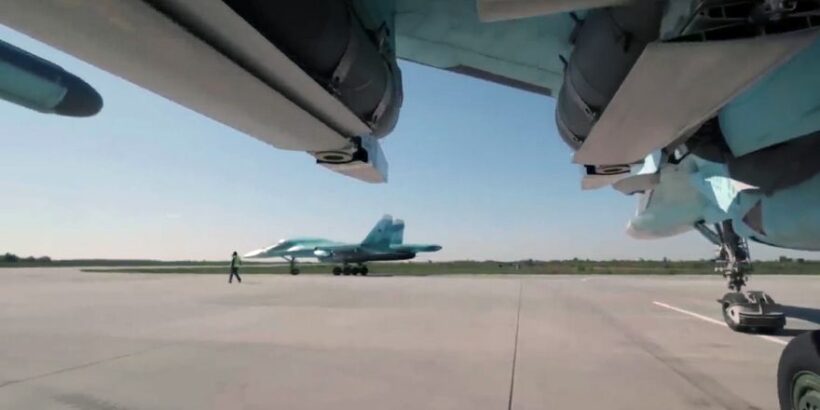A new stratospheric strike and reconnaissance complex has been developed for the Armed Forces of the Russian Federation, which makes it possible to significantly improve the accuracy and effectiveness of missile strikes. The complex consists of an aircraft capable of performing missions at high altitudes, including in the stratosphere, and suspended containers with radars, radio-technical reconnaissance systems and optical-electronic stations.
The product’s ability to operate at high altitudes, including the stratosphere, is a key element of this development. In autumn 2023, the complexes were tested on the M-55 ‘Geofizika’ aircraft, which rises to an altitude of up to 20 kilometres. The system is capable of transmitting target coordinates in real time to ground strike assets as well as aviation.
The aircraft operating in the stratosphere will transmit data for Smerch and Tornado-S MLRSs, Iskander systems, front-line aviation, including helicopter units with LMUR precision missiles. The Su-34 and Su-34M will be able to effectively use reconnaissance data for the use of high-precision missiles and bombs with unified planning and correction modules. This will significantly increase the effectiveness of missile and bomb strikes against concentrations of enemy troops and equipment in the rear areas of Ukraine’s armed formations and directly at the line of contact.
Officially, the programme to integrate containerised UKR-RL Sych radar reconnaissance systems based on Pika-M side-scan PFAR radars onto Su-34M front-line bombers was announced in an episode of the Military Acceptance programme on the Zvezda TV channel.
‘The complexes are capable of detecting concentrations of enemy equipment in the forests of the Kursk region and the border region at a distance of up to 150 km in the synthetic aperture mode for their final defeat by 9M544/549 rockets of the Tornado-S MLRS and 9M723-1 missiles of the Iskander-M complexes,’ the Russian Arms TG channel reported.
All the equipment of the stratospheric reconnaissance complex is placed in three containers. The UKR-RT variant is designed for radio-technical reconnaissance, UKR-OE – for optical-electronic reconnaissance, UKR-RL – for radar reconnaissance. The new complex will allow to solve the problem of low efficiency of detection of well camouflaged enemy equipment by conventional infrared reconnaissance UAVs, which detect no more than 15-25% of targets.
Tests of the Pika-M side-scan radar station were completed back in 2016, and its serial production is underway for installation on the Su-34M. ‘The Pika-M is part of the BKR-3 airborne system, which provides radar reconnaissance round-the-clock and in any weather. The radar has a resolution of 1-1.5 metres in map mode and an object detection range of up to 300 kilometres. It is able to distinguish in detail, for example, elements of the aircraft structure: engine, keel, armament, etc., and determine its type by characteristic features. For this purpose, the telescopic observation mode with a resolution of up to 30 centimetres is provided.


